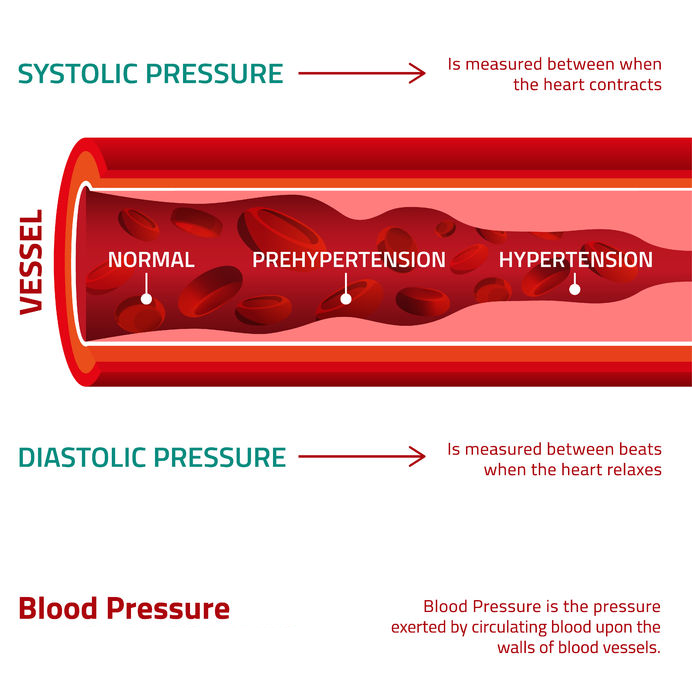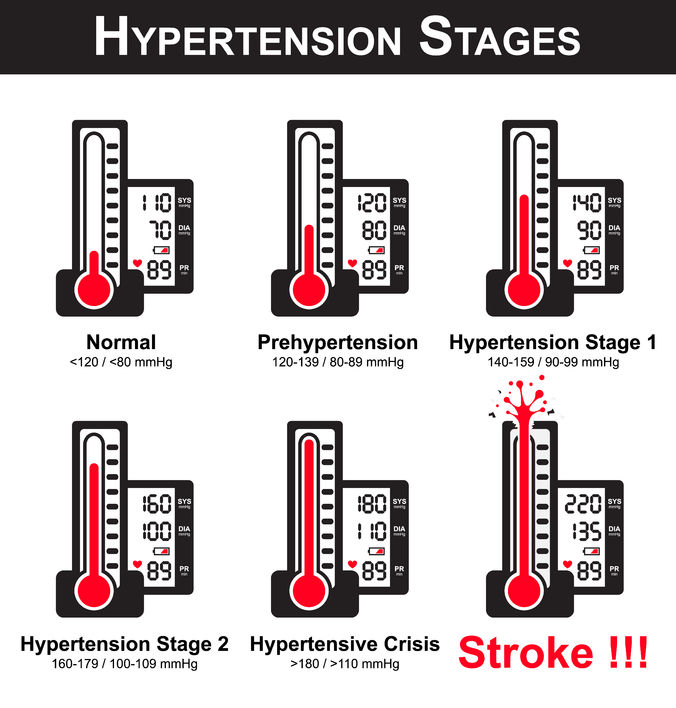menu



What is blood pressure?
The heart pumps blood through the blood vessels in our bodies. This is important for delivering oxygen and other nutrients to our tissues, and also for removing waste. The pumping action is caused by the heart muscle relaxing and contracting. When the heart muscle relaxes (called diastole) the heart is filled with blood. Subsequent contraction of the heart muscle (called systole) forces the blood from the heart into the blood vessels to circulate around the body. Blood pressure (BP) refers to the pressure created in the arteries by blood as the heart contracts and relaxes.
The heart pumps blood through the blood vessels in our bodies. This is important for delivering oxygen and other nutrients to our tissues, and also for removing waste. The pumping action is caused by the heart muscle relaxing and contracting. When the heart muscle relaxes (called diastole) the heart is filled with blood. Subsequent contraction of the heart muscle (called systole) forces the blood from the heart into the blood vessels to circulate around the body. Blood pressure (BP) refers to the pressure created in the arteries by blood as the heart contracts and relaxes.
Being inactive is bad for your health
People who aren't physically active are much more likely to have health problems, like heart attack and stroke. On the other hand, regular physical activity helps to lower blood pressure, control weight and reduce stress.
The American Heart Association recommends:
For overall health benefits to the heart, lungs and circulation, perform any moderate to vigorous aerobic activity using the following guidelines:
Aim for at least 90 to 150 minutes of aerobic and/or dynamic resistance exercises per week and/or three sessions of isometric resistance exercises per week.
For most healthy people, get the equivalent of at least 150 minutes (two hours and 30 minutes) per week of moderate-intensity physical activity, such as brisk walking. You can incorporate your weekly physical activity with 30 minutes a day on at least five days a week.
Physical activity should be performed in episodes of at least 10 minutes, and preferably, it should be spread throughout the week.
Include flexibility and stretching exercises.
Include muscle-strengthening activity at least two days each week.
People who aren't physically active are much more likely to have health problems, like heart attack and stroke. On the other hand, regular physical activity helps to lower blood pressure, control weight and reduce stress.
The American Heart Association recommends:
For overall health benefits to the heart, lungs and circulation, perform any moderate to vigorous aerobic activity using the following guidelines:
Aim for at least 90 to 150 minutes of aerobic and/or dynamic resistance exercises per week and/or three sessions of isometric resistance exercises per week.
For most healthy people, get the equivalent of at least 150 minutes (two hours and 30 minutes) per week of moderate-intensity physical activity, such as brisk walking. You can incorporate your weekly physical activity with 30 minutes a day on at least five days a week.
Physical activity should be performed in episodes of at least 10 minutes, and preferably, it should be spread throughout the week.
Include flexibility and stretching exercises.
Include muscle-strengthening activity at least two days each week.
How Is Blood Pressure Measured?
A doctor or nurse will measure your blood pressure with a small gauge attached to an inflatable cuff. It's simple and painless.
The person taking your blood pressure wraps the cuff around your upper arm. Some cuffs go around the forearm or wrist, but often they aren't as accurate.
Your doctor or nurse will use a stethoscope to listen to the blood moving through your artery.
She'll inflate the cuff to a pressure higher than your systolic blood pressure, and it will tighten around your arm. Then she'll release it. As the cuff deflates, the first sound she hears through the stethoscope is the systolic blood pressure. It sounds like a whooshing noise. The point where this noise goes away marks the diastolic blood pressure.
In a blood pressure reading, the systolic number always comes first, and then the diastolic number. For example, your numbers may be "120 over 80" or written as 120/80.
A doctor or nurse will measure your blood pressure with a small gauge attached to an inflatable cuff. It's simple and painless.
The person taking your blood pressure wraps the cuff around your upper arm. Some cuffs go around the forearm or wrist, but often they aren't as accurate.
Your doctor or nurse will use a stethoscope to listen to the blood moving through your artery.
She'll inflate the cuff to a pressure higher than your systolic blood pressure, and it will tighten around your arm. Then she'll release it. As the cuff deflates, the first sound she hears through the stethoscope is the systolic blood pressure. It sounds like a whooshing noise. The point where this noise goes away marks the diastolic blood pressure.
In a blood pressure reading, the systolic number always comes first, and then the diastolic number. For example, your numbers may be "120 over 80" or written as 120/80.

About Us
Training people for over 30 years, Body Plus has the experience and credentials to deliver results to anyone willing to work hard and eat right! Don’t waste precious time. It’s time to get fit NOW!!!